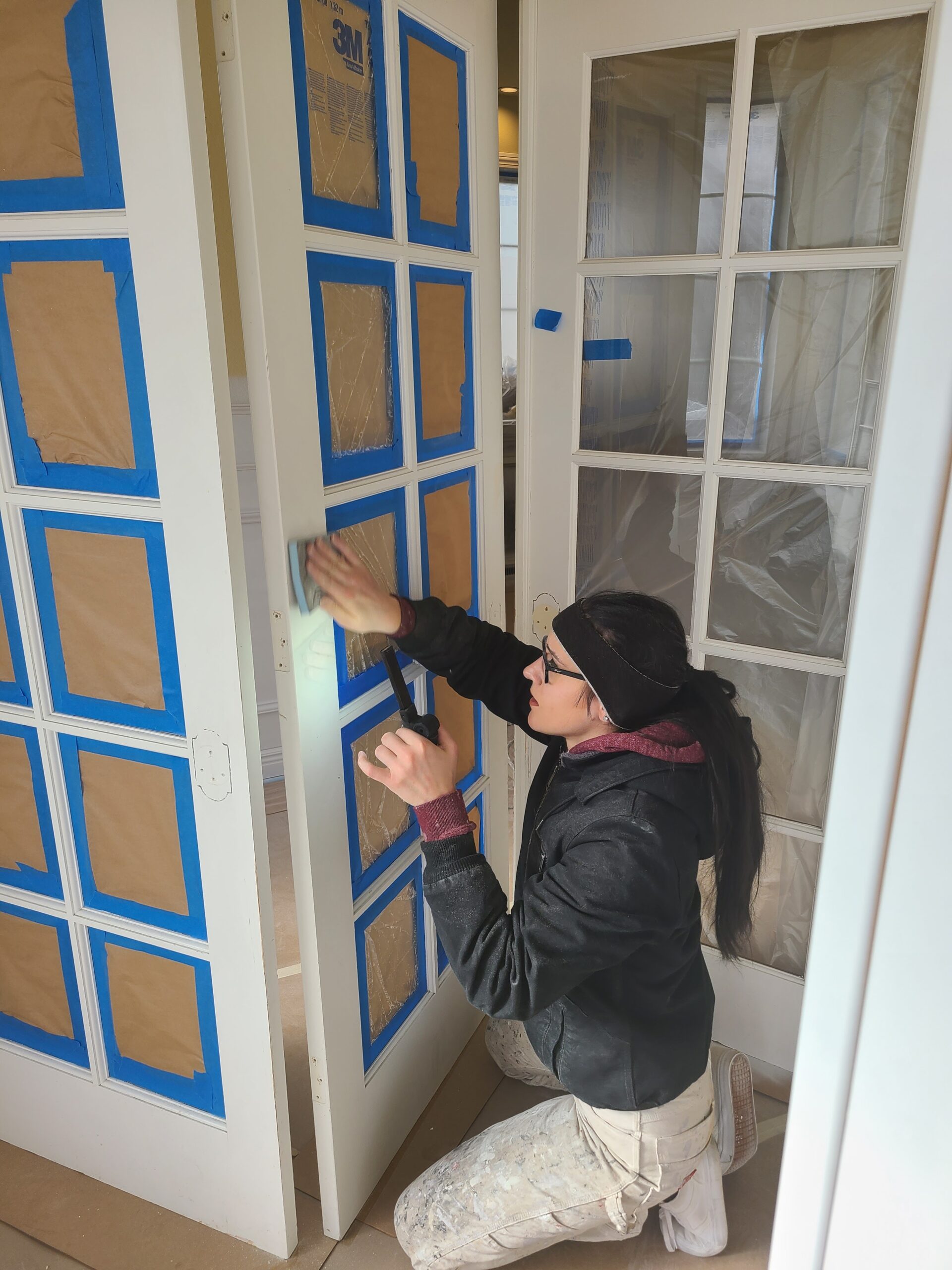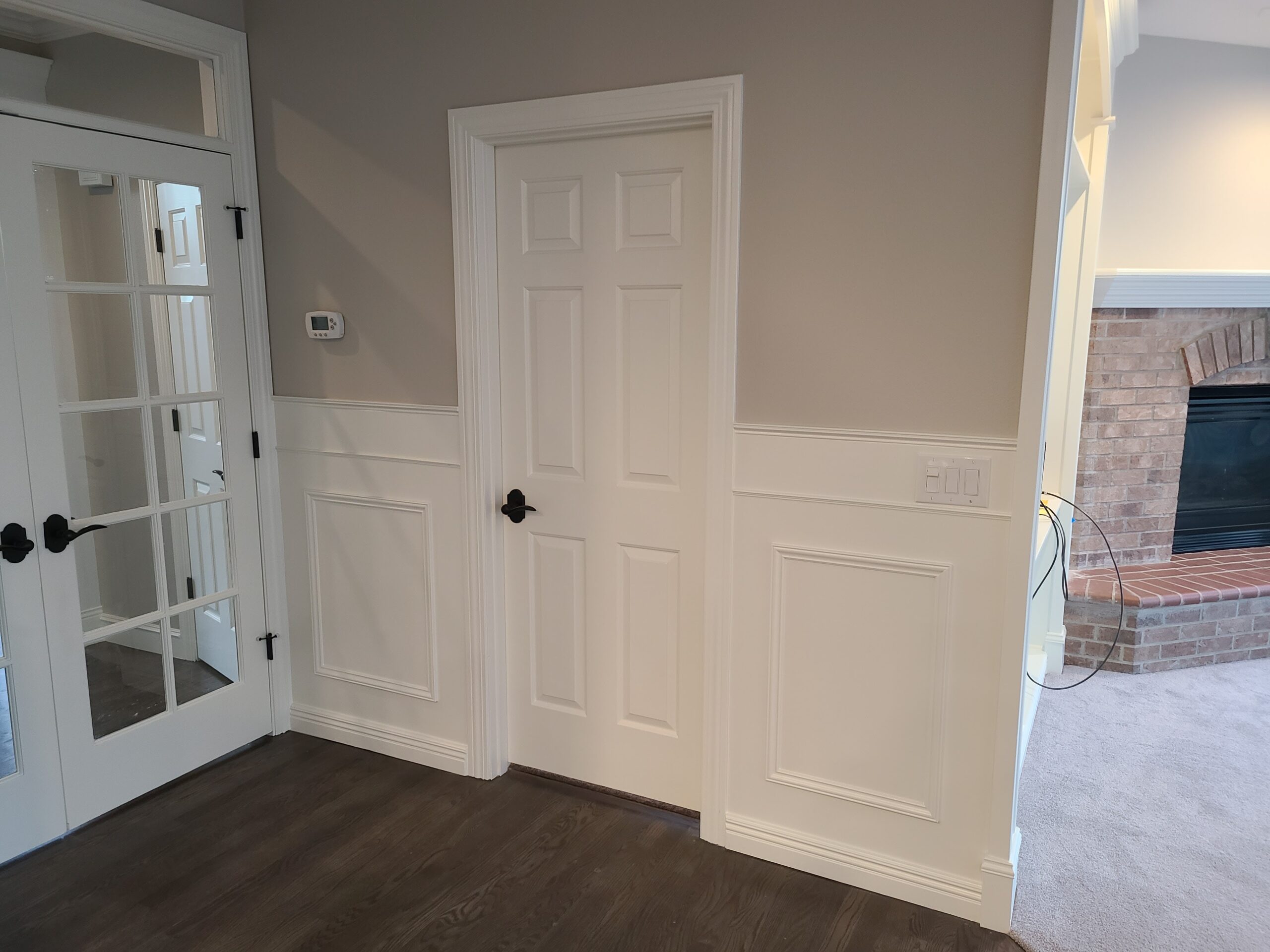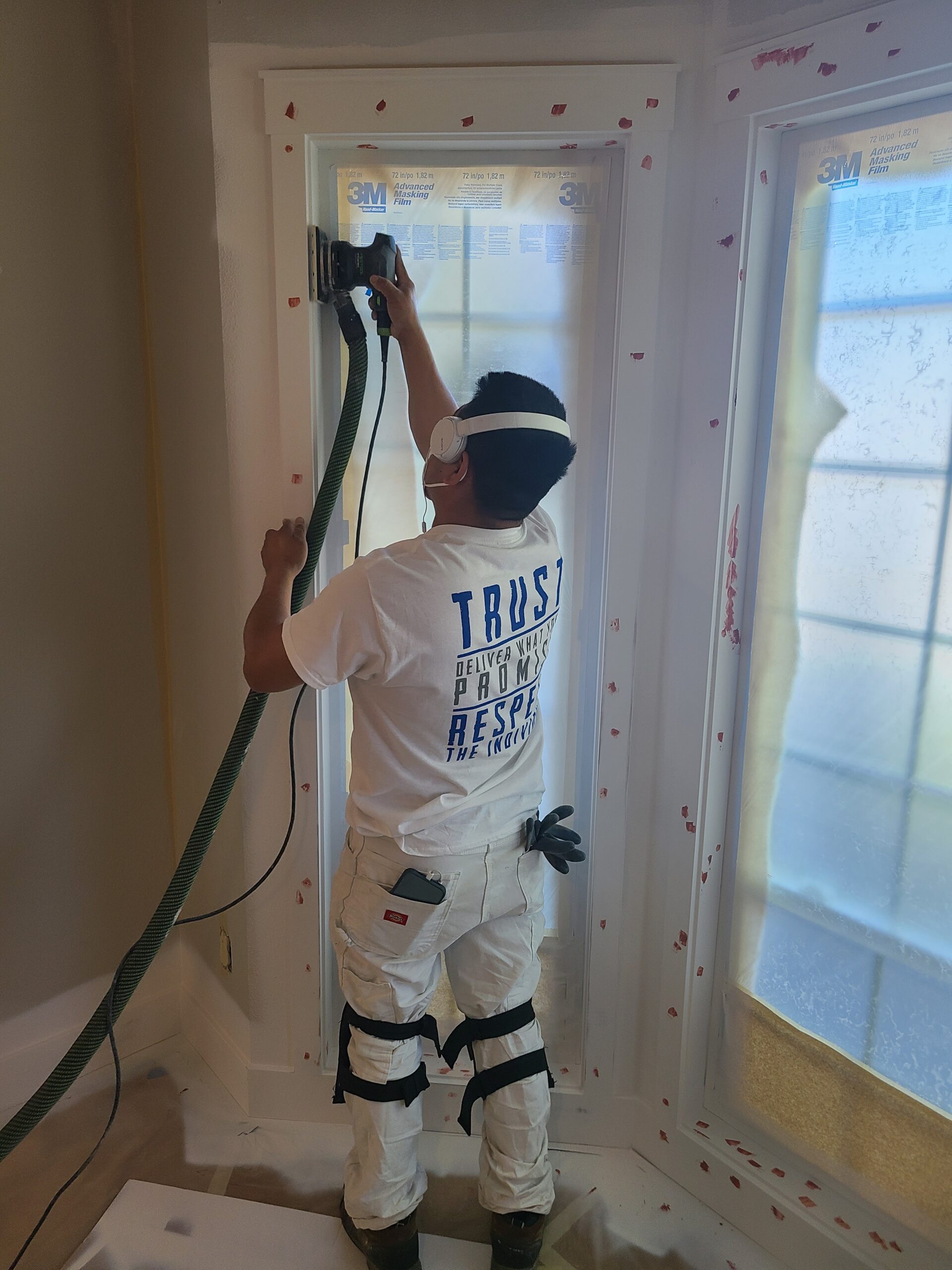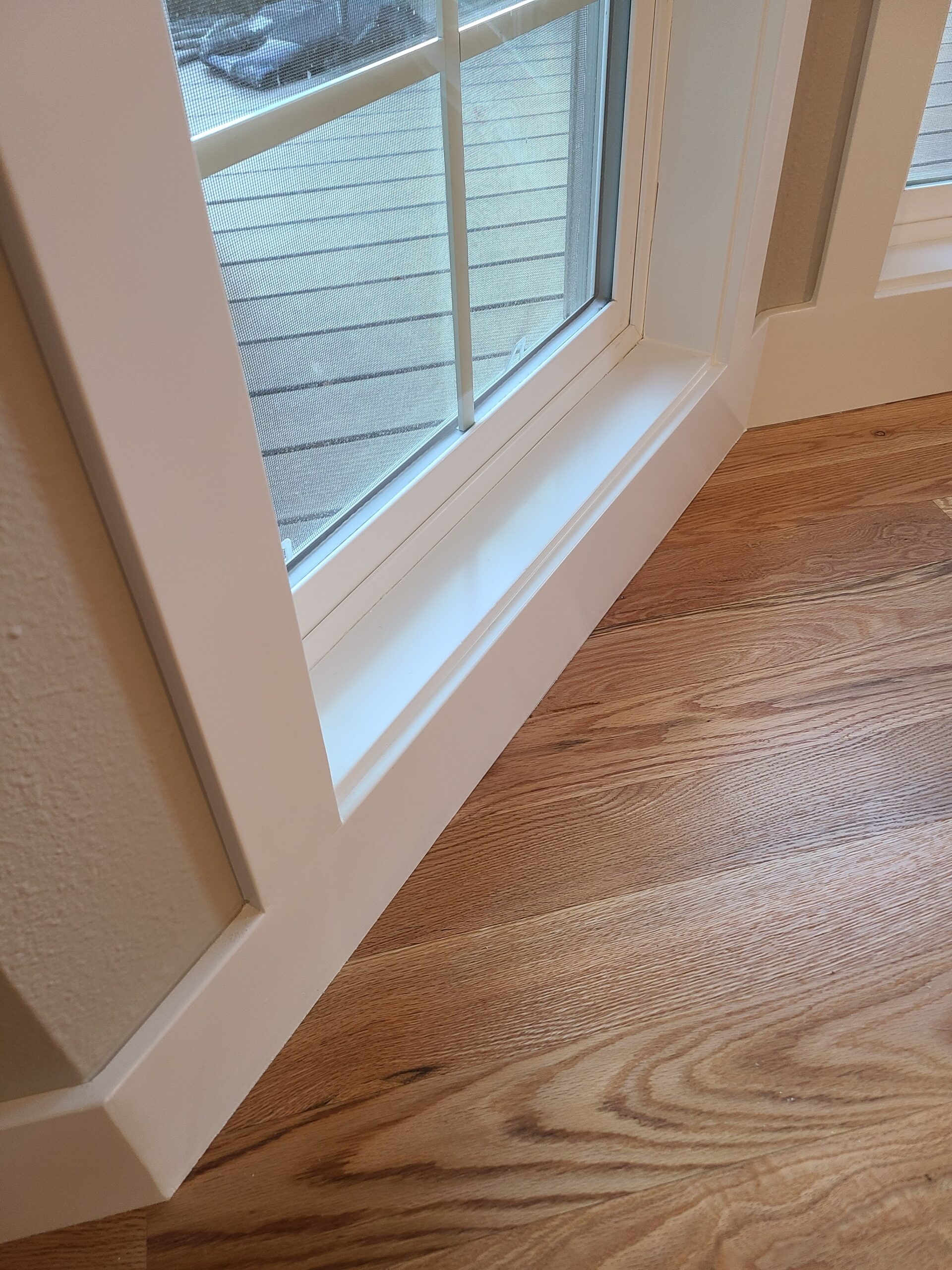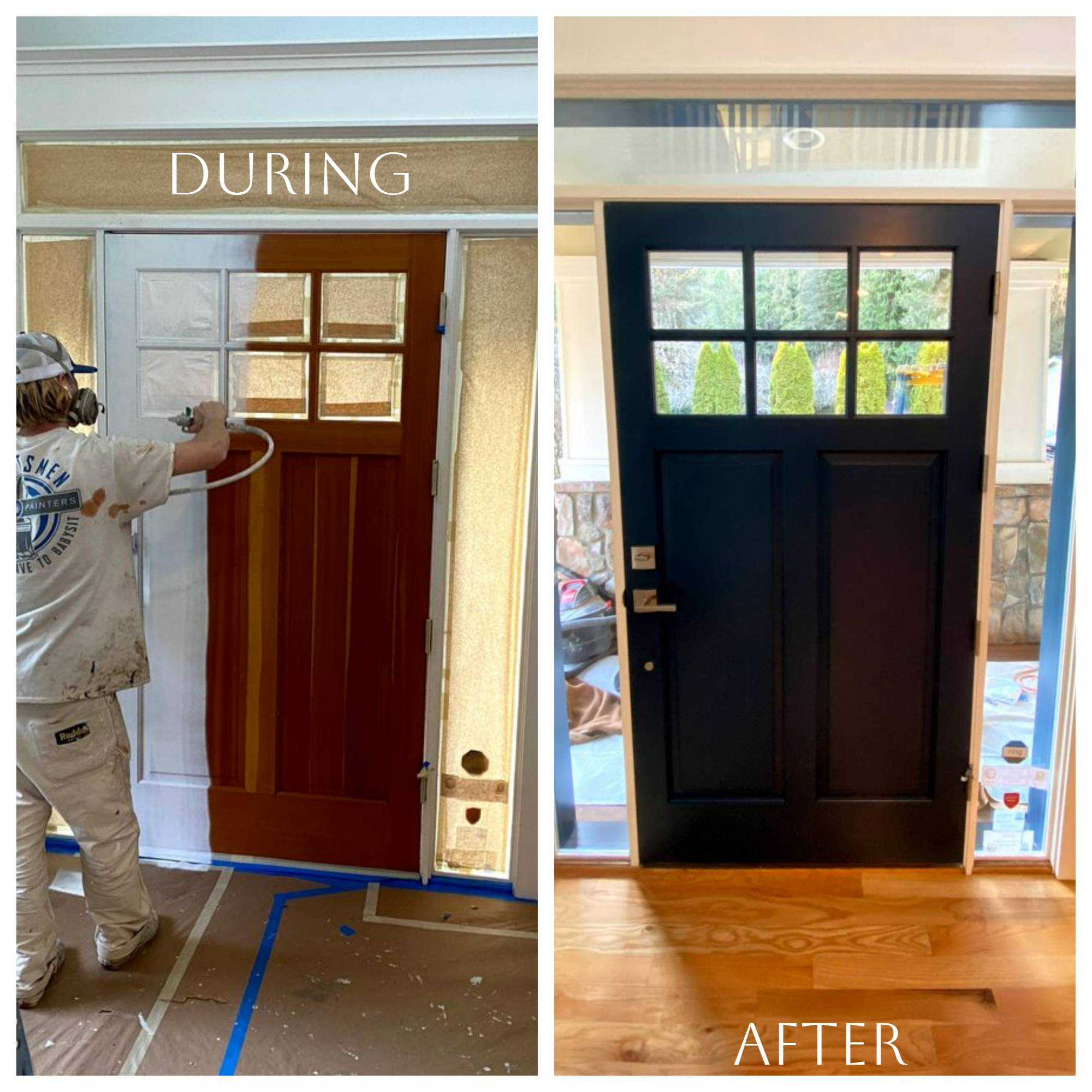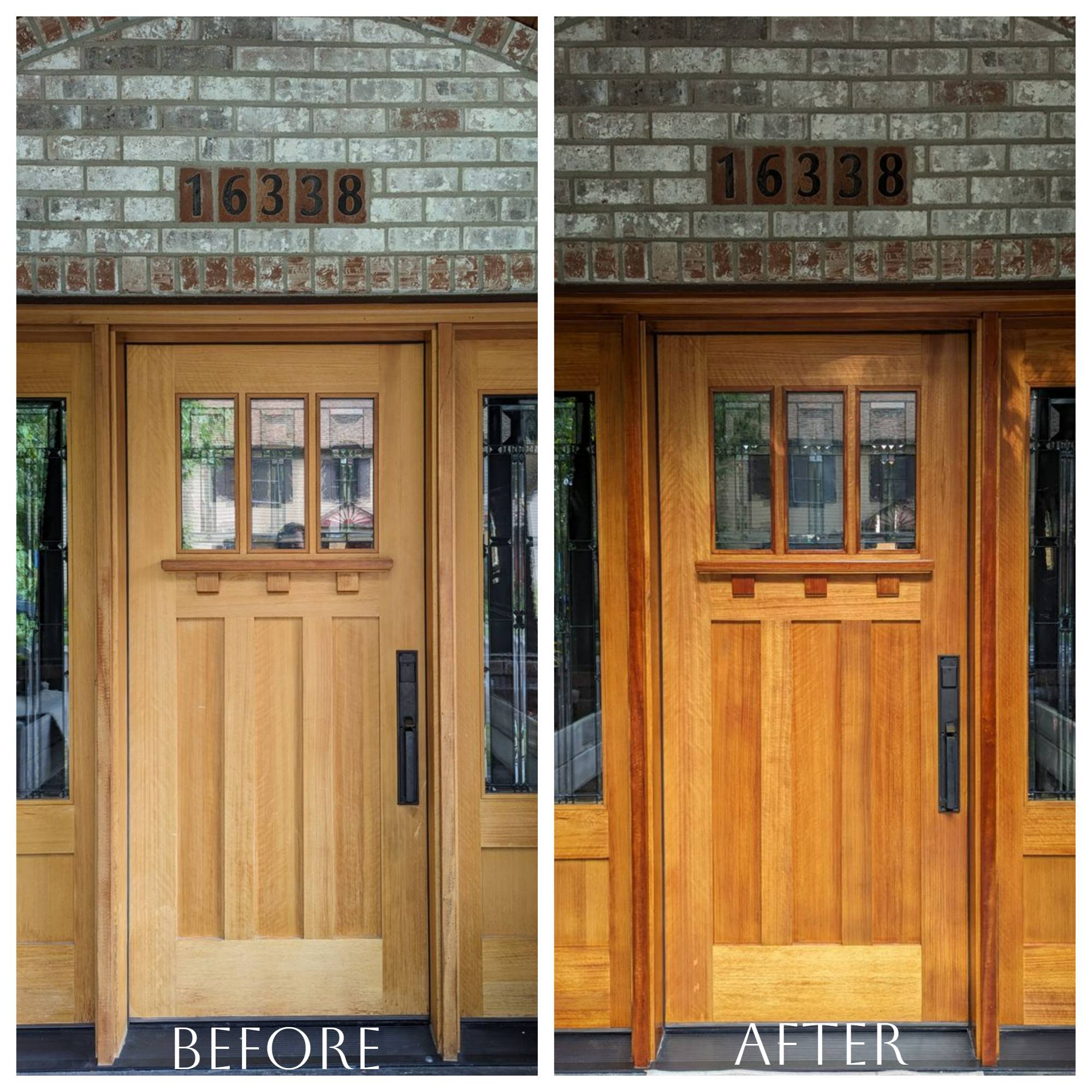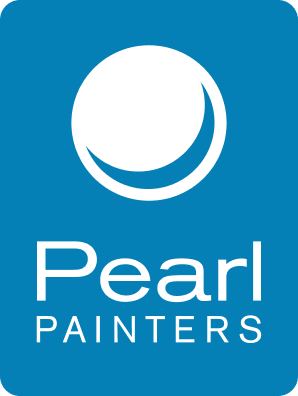For more than two decades, Pearl Painters has fine-tuned its processes through countless projects. If you demand Let’s unravel the intricacies.
The Art of Preparation: Laying a Solid Foundation
- Furniture and floor protection: Moving all furniture out of a room is ideal but if you are unable you will want to thoroughly cover everything with plastic and drop cloths.
- Sanding: Achieving the right level of smoothness is not only for aesthetics but also for functionality. Progressing from medium to fine-grit sandpapers assures optimal paint adherence, resulting in a touchably smooth finish.
- Cleaning: The cornerstone of a pristine paint job is a contaminant-free surface. Employing a degreaser such as denatured alcohol to remove grease and contaminants to ensure a base that augments paint adhesion, promoting durability and vibrancy.
- Primer: For the best adhesion and stain blocking we recommend an oil primer such as Cover Stain.
- Dents and holes: Wood filler, bondo and glazing putty combined with the use of a LED light are great choices for filling holes, dents gouges and cracks.
- Gap and Crack Filling: gaps between two boards or your walls can be addressed by caulking to elevate the end result. A seamless surface provides an ideal canvas for the paint to exhibit its full potential.
- Taping and Masking: It’s these nuances that distinguish professional results from amateur efforts.
- Selecting the Right Tape: Employing the appropriate tape can substantially improve the outcome by preventing paint bleed-through, potential surface damage, and adhesive residues.
Dust Containment: A Testament to Meticulousness
- During Sanding: Reducing dust is more than just a cleanliness measure—it’s integral for guaranteeing a smooth finish and paint adhesion.
- Dust Barriers & HEPA-Filtered Vacuums: By adopting these tools, you ensure an optimal painting environment, devoid of unwanted particulates that can interfere with immaculate results.
- During Spraying: Controlling air quality and humidity levels is pivotal, protecting both the project’s integrity and the overall environment’s comfort.
Techniques to Master: Making an Informed Choice
Spraying: Interior Trim and Doors
Pros: Provides a uniform, brush stroke-free finish that revitalizes spaces with a modern touch.
Cons: Necessitates extensive masking, has potential for overspray or paint runs if not executed meticulously, and often requires the removal or shielding of most furniture from the home to avert damage.
Hand Painting: Interior Trim and Doors
Pros: Imparts a personalized touch to interiors, often demanding less masking and resulting in fewer disruptions.
Cons: Might be more time-intensive and can occasionally exhibit visible brush strokes if not applied with the right technique.
Conclusion:
By embracing these techniques and nuances, challenges like paint adhesion, paint runs, sags, drips, splatters, heavy brush marks, and or stipple is largely circumvented. The resulting interiors won’t just captivate onlookers immediately but will continue to do so over time, mirroring the meticulousness and expertise invested.



